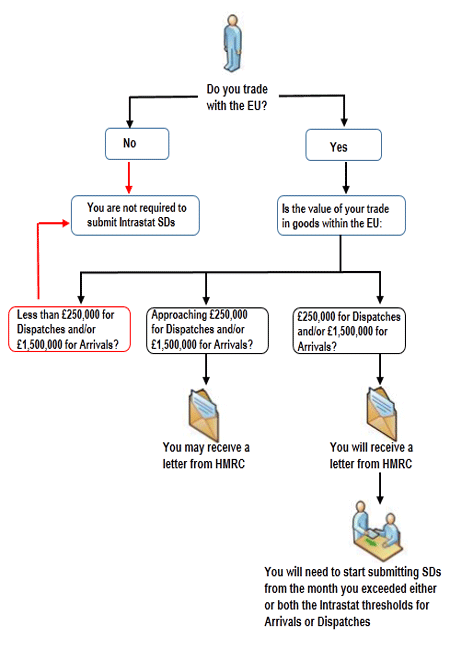Although often viewed as a necessary evil, Intrastat can be used by a business to obtain valuable information on markets in the EC. …Oh, and it may be quite useful to understand it to avoid getting a criminal record! In this article I summarise the basics, provide useful links and look at the pros and cons of the regime.
So, what is Intrastat?
Intrastat is the name given to the system used for collecting statistics on the trade in goods between all 28 Member States of the EC. If certain conditions are met a business must, by law, submit monthly Intrastat Supplementary Declarations (SDs). Intrastat does not cover services, nor is it required for exports to recipients outside the EC.
The data collected under the Intrastat system forms a large part of overall UK trade statistics totals which in turn are an important part of the UK Balance of Payment account and an important indicator of the health of ‘UK plc’. This data is published at uktradeinfo and is used by a wide range of government and international organisations and is particularly useful in helping businesses gauge import penetration and establish new markets for their goods.
Intrastat responsibilities
If a VAT registered business trades with any of the other EC Member States, it will have a responsibility to report the trade to HMRC. How detailed that report is required to be depends on the value of its trade with other EC Member States for either purchases (arrivals) or sales (dispatches). If a business’ trade in goods falls below the Intrastat thresholds then EC Sales Lists may be required.
Reporting Thresholds for SDs
The limits are:
- £1,500,000 for arrivals, and;
- £250,000 for dispatches
In a calendar year.
Intrastat should not be confused with EC Sales Lists which are used to collect information on all sales from UK VAT registered businesses to business recipients in other EC Member States. A guide to EC Sales Lists here
Classification of goods for Intrastat
Finding the right commodity code for goods is one of the most important aspects of Intrastat. An online classification tool, the Intrastat Classification Nomenclature (ICN) is available to assist businesses find the right commodity code for its goods. Here
The ICN is a fully searchable facility which can be used by everyone from beginner to expert.
Value for SDs
Only the value of goods are included in SDs (plus any related freight or insurance charges where they form part of the invoice or contract price of the goods).
The value does not include:
- Commission, legal and financial services
- Insurance, freight and/or carriage (unless it is included with the cost of the goods)
- Labour
- Goods bought and sold within the EU but which do not actually enter or leave the UK
- Maintenance costs
- Repairs
Submission of SDs
This may be done online or offline (which is preferred for large amounts of data).
Online submission details here
Offline submissions are via pre-prepared Excel spreadsheets available here
Via an email attachment – the file must be converted into the message format Electronic Data Interchange for Commerce and Transport (EDIFACT). Details here
Deadlines for submission of SDs
Intrastat declarations must be submitted on a monthly basis. Complete and accurate declarations must be received by the 21st day of the month following the reference period to which they relate.
Now, the scary part.
Penalties
It is perhaps surprising that if you fail to submit SDs by the due date, or send data that is inaccurate, a business will be committing a criminal offence (Statistics of Trade [C&E] Regulations 1992).
Penalties may be levied in cases where SDs are persistently late, missing, inaccurate or incomplete.
Although the penalty regime is a criminal one and could result in proceedings in a Magistrates Court, HMRC state that it normally prefers to “compound” alleged offences. This involves the offer of an administrative fine in lieu of Court proceedings. However, an administrative fine is only offered when, after receiving a Warning of Possible Criminal Proceedings letter, a business has brought its Intrastat declarations completely up to date. If any declarations remain outstanding Court proceedings will be instigated.
The plus side.
How to use Intrastat for your business
It is possible for a business to find out about; trade markets, competition, suppliers, customers and competitors using data collected via Intrastat. Additionally, the information may be used to create a bespoke data table to suit a business’ specific needs. Information here
Intrastat pros and cons
Yes, businesses are being used as unpaid providers of trade information as well as unpaid collectors of tax. It then does seem rather draconian that HMRC “coerce” businesses to provide information on pain of a criminal record. But the information is then there for a business trading within the EC to use for its commercial advantage. It’s another chore on the VAT checklist I’m afraid.

